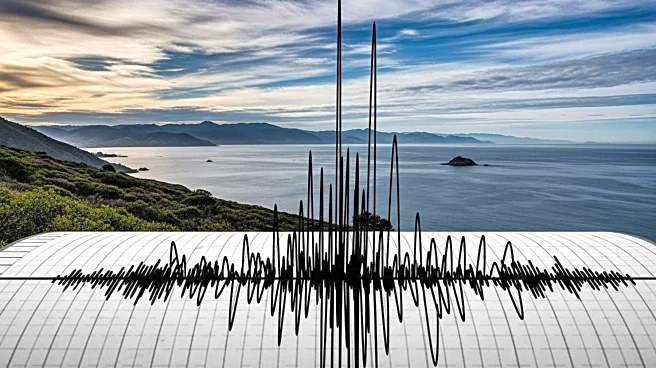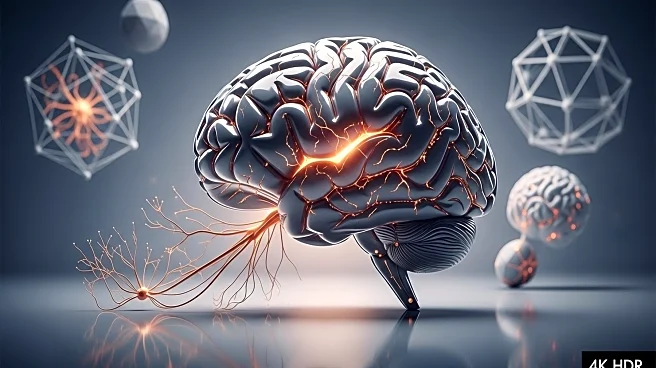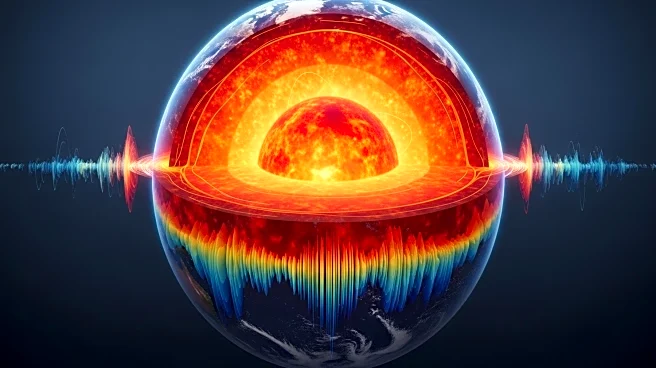What's Happening?
MIT geologists have successfully quantified the energy release in earthquakes by studying 'lab quakes,' which are miniature analogs of natural earthquakes triggered in a controlled laboratory setting. The research revealed that only about 10 percent of a lab quake's energy causes physical shaking, while less than 1 percent goes into breaking up rock. The majority of the energy, approximately 80 percent, is converted into heat, which can be intense enough to melt surrounding material. The study also found that a region's deformation history influences the energy budget of a quake, affecting how destructive it could be.
Why It's Important?
Understanding the energy distribution in earthquakes is crucial for predicting seismic risks and improving earthquake models. By quantifying how energy is partitioned during a quake, researchers can better assess the potential impact on regions prone to seismic activity. This knowledge could lead to more accurate predictions of earthquake likelihood and severity, aiding in natural hazard mitigation efforts. The findings also highlight the importance of a region's geological history in determining its vulnerability to future quakes, which could inform public policy and infrastructure planning in earthquake-prone areas.
What's Next?
The insights gained from lab quakes could be extrapolated to natural earthquakes, helping seismologists refine their models and predictions. Future research may focus on applying these findings to real-world scenarios, potentially leading to improved earthquake forecasting and risk assessment. Collaboration between geologists and policymakers could result in enhanced preparedness strategies for communities at risk. Additionally, advancements in technology may allow for more detailed monitoring of seismic activity, providing valuable data for ongoing research.
Beyond the Headlines
The study underscores the complexity of earthquake dynamics and the challenges in replicating natural processes in a laboratory setting. Ethical considerations arise in the application of this research, particularly in balancing scientific exploration with public safety. As researchers continue to explore the physics of earthquakes, the integration of these findings into practical applications must be carefully managed to avoid unintended consequences. The role of interdisciplinary collaboration in addressing seismic risks is also highlighted, emphasizing the need for comprehensive approaches to disaster preparedness.











